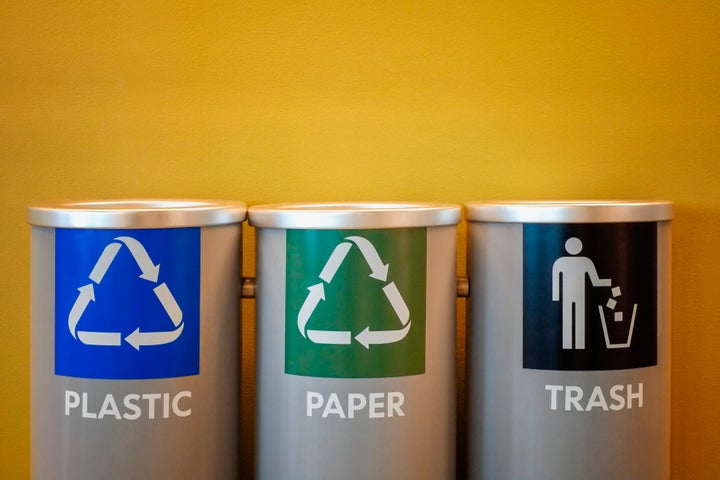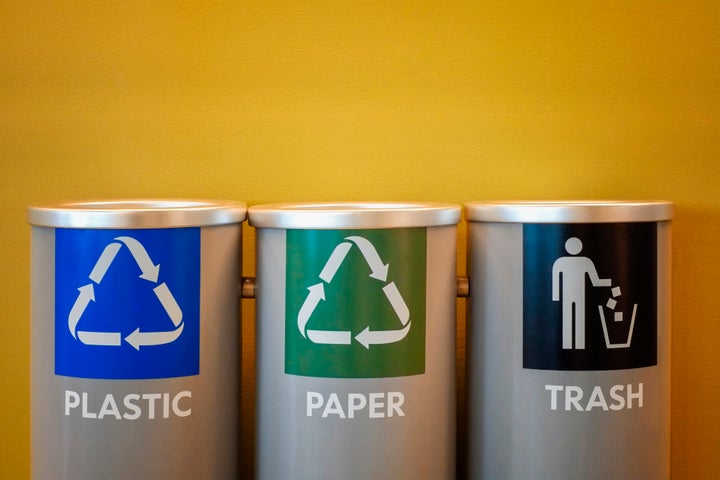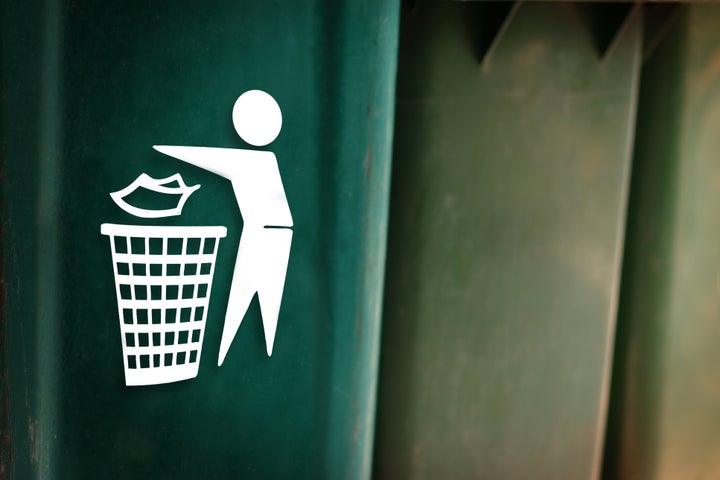Latest questions:
Trending questions:
Hot questions:
Motivation to recycling
9 answers
I have came across the following factors/practices that are very effective in increasing the recycling participation
1. Easy and convenient recycling experience
2. Financial incentives
3. Increase education and outreach for building strong awareness
4. Providing feeling of effectiveness, self esteem, reward
5. Build awareness on the concern about environment
6. Building social pressure recycler V's non-recycler.
Answer depends on which clime the respondent lives in...
In the developing world...rewards (cash or material gifts) can motivate one to recycle and to a lesser extent - to maintain a clean environment.
In the developed world...having a sustainable world for our children and our children's' children is the real reason.
Taking ownership and responsibility for your added value processes during life time of products/ systems/ concepts/ raw materials - and beyond - in order to keep control over your assets, intellectual property, continuity etc. It’s a business strategy challenging eco design of processes, life cycles, circularity and CSR
Americans generate 10.5 million tons of plastic waste a year but recycle only 1 or 2 % of it. An estimated 14 billion pounds of trash-most of it plastic -is dumped in the world's oceans every year.
Enough plastic is thrown away each year to circle the earth four times. We currently recover only five percent of the plastics we produce. The average American throws away approximately 185 pounds of plastic per year.
According to the EPA, plastics make up more than 12 percent of the municipal solid waste stream, “a dramatic increase from 1960, when plastics were less than one percent of the waste stream.” US residents are buying more plastic, and only about 8 percent of it gets recycled. The plastics industry rarely uses recycled plastics in the vast majority of their products, unlike the glass and metal industries. The recycling arrows stamped on plastic products and the cities that collect every type of plastic via their recycling programs lead people to believe that all plastic products are recyclable and being recycled, and that’s simply not true. Non-recyclable plastics are separated and landfilled.
Some plastics we know are toxic, such as #3, which is also known as PVC or vinyl. PVC contains phthalates and heavy metals, and creates dioxins when it burns. Other plastics contain Bisphenol-A (BPA), which has been identified as a chemical that disrupts hormones. Plastics can contain thousands of possible additives, and manufacturers are not required to disclose what their recipes are. Any plastic can leach, depending on the conditions (light, heat) and what additives it includes.
https://news.nationalgeographic.com/2018/03/great-pacific-garbage-patch-plastics-environment/
A SEA OF PLASTIC?
Publication of the garbage patch study coincided with a new report from Britain, Foresight Future of the Sea, that found plastic pollution in the ocean could triple by 2050 unless a “major response” is mounted to prevent plastic from reaching the ocean. The report declared plastic pollution to be one of the main environmental threats to the seas, along with sea-level rise and warming oceans.
The study included two aerial surveys in October of 2016 that took 7,000 images, and 652 ocean surface trawls conducted in July, August, and September of 2015 by 18 vessels.
The surface trawls also filled in the rest of the story.
Fifty plastic items collected had a readable production date: One from 1977, seven from the 1980s, 17 from the 1990s, 24 from the 2000s, and one from 2010. Researchers also found 386 objects with recognizable words or sentences in nine different languages.
The writing on a third of the objects was Japanese and another third was Chinese. The country of production was readable on 41 objects, showing they were manufactured in 12 different nations.
The study also concluded that plastic pollution is “increasing exponentially and at a faster rate than in surrounding waters.” Others are not as confident that the conclusion indicates a dramatic change in distribution of marine debris. Much of the world’s marine debris is believed to lie in the coastal regions, not in the middle of oceans.
Leonard says he was impressed with the scope of the study. “It’s strong science,” he says. “But at the same time, in this field, the harder we look, the more plastic we find.”
Anything done to improve planet Earth by increasing recycling is a good thing. Everyone needs to increase their knowledge about what items that can and can't be recycled. This education should start from the recycling company's themselves and be promoted by all levels of government. These programs will help the educated consumer make a better choice as to what product to buy and use that can and will be more Eco friendly. This should be accompanied with making recycling mandatory all across the USA and worldwide. This thought process of reduce, reuse, recycle will reduce the amount of garbage thrown away into our landfills. This hopefully leads to less trash thrown into the oceans, lakes, rivers, streams the world over. The manufacturing industry should help by reducing waste, using more recycled products in their manufactured products and designing more biodegradable product packaging. Some areas of the USA are making electrical energy through the use of burning trash to heat water. This changes to steam to turn turbines which generates electricity. This helps to reduce the amount of trash that is disposed of in landfills.
The Psychology Behind Why People Don’t Recycle
If it’s not extremely easy, people won’t do it.
By Erin Schumaker BRYAN MULLENNIX VIA GETTY IMAGES
BRYAN MULLENNIX VIA GETTY IMAGES
The benefits of recycling seem straightforward. The practice reduces waste sent to landfills, conserves natural resources, reduces pollution and creates jobs. And the majority of Americans do recycle... sometimes.
Far fewer, however, do it consistently.
“Recycling is a behavior,” Brian Iacoviello, an assistant psychiatry professor at the Icahn School of Medicine at Mount Sinai in New York City told The Huffington Post. “Much like exercising or eating healthily, people often engage in this behavior less than they ‘should.’”
Indeed, according to a 2011 Ipsos Public Affairs survey, only half of adults recycle daily. Another third of respondents said they recycle less frequently than that, and a full 13 percent revealed that they never recycle.
Because the reward for recycling (saving the earth) and the repercussions for infrequently recycling (damaging the environment) aren’t necessarily immediate, it can be hard for people to make the association between their daily habits and those habits’ consequences.
“It’s that true paradox,” said Jessica Nolan, an associate psychology professor at the University of Scranton. “Individual behavior is both essential and inconsequential.”
Nolan, who previously worked as a municipal recycling director and who researches environmental problems from a social perspective, said that identifying a community’s barriers to recycling is an important first step toward increasing participation.
While different communities and demographics have different barriers to recycling ― and thus require unique recycling solutions to overcome them ― here are the top reasons people said they don’t recycle more: 
The primary excuse people gave for not recycling was that recycling wasn’t convenient or accessible to them.
“Obviously if the infrastructure is not there, you can’t expect people to participate in a program that doesn’t exist,” Nolan said. “We know that convenience is one of the strongest predictors of whether or not somebody will participate in the available recycling program.”
According to The Economist, about a quarter of Americans don’t have access to curbside recycling, meaning they have to take the extra step of dropping their cans and bottles at a recycling center if they want to participate.
Of course, how people answer a survey isn’t necessarily a reliable indicator of whether or not services are available to them. While doing an informal survey of college students in Arkansas, Nolan noticed that individuals from the same town sometimes answered differently about whether or not a recycling program existed in their hometown.
“If you’re not interested, you might think you have no recycling program, but in fact you do,” she said. “If there’s a drop off center, you wouldn’t see it unless you went looking for it.”
HuffPost combined the reasons people said they don’t recycle into three clear “types,” then asked the experts what can be done to convert them:
1. The ‘No-Time’ Non-Recycler
 JAMIE GRILL VIA GETTY IMAGES
JAMIE GRILL VIA GETTY IMAGES
Subscribe to HuffPost’s wellness email
Your guide to taking care of your mind and body so you can take on the world.
The excuse: Recycling is inconvenient, time-consuming or too costly.
The experts say: Iacoviello thinks the crude cost-benefit analysis people do when evaluating recycling’s benefit to them emphasizes the immediate over the long term.
The cost of recycling “is seen and felt more immediately than the cost to the environment of not recycling, which is why it influences behavior more,” he explained.
Those who think recycling is inconvenient may be doing a similar cost-benefit analysis of how much time recycling takes compared to how easy they perceive the activity to be.
“Once you’ve got your system in place, it’s really not that hard,” Nolan said. “The perceived difficulty of doing something is always greater.”
Targeted intervention: Structural solutions are fundamental to getting more people to participate in environment efforts, according to Nolan.
If, for example, citizens say their town’s drop off program is inconvenient, instituting a curbside program could improve recycling recycling participation rates. Rural communities may need to think more creatively; Nolan suggested partnerships with grocery stores, convenient drop-off sites because people are already visiting them.
Or, she said, “If you see recycling as a value-added activity, why not charge a little more for trash [services] and then make recycling [pickup] free? There are structural ways that you can incentivize recycling.”
2. The Aluminum Can Confuser
 GETTY IMAGES/TETRA IMAGES RF
GETTY IMAGES/TETRA IMAGES RF
The excuse: Isn’t sure what’s recyclable and what’s not; doesn’t understand recycling’s benefit.
The experts say: Recycling can be confusing. It differs from community to community and rules about recycling have changed over time.
And recycling contamination ― when non-recyclables are mixed in with recyclables, rendering the whole batch useless ― is a real issue. (Pro tip: plastic bags CANNOT go in the recycling bin.)
“There’s always that tension between getting people to participate and making sure you end up with a product, rather than just a waste stream,” Nolan said.
Targeted intervention: Uniform educational materials across communities could help eliminate confusion, even if those communities accept different materials as recyclable.
Nolan suggested having one single image for a given material that’s used everywhere. “If you take glass, then this is the sticker for glass,” she explained. “If you take metal, this is the sticker for which metals you can put in. The idea is to make it easier and free up mental resources.”
Penalties for not recycling are especially effective at encouraging people to learn their cities’ recycling rules. San Francisco, for example, has made strides by making recycling mandatory and fining citizens, building owners and businesses who don’t separate their trash, recycling and compost materials.
Today the city has the highest landfill diversion rate in the country, and diverts 80 percent of its waste away from landfills, with a goal of eliminating waste entirely by 2020.
3. The Debris Denier
 THANASUS VIA GETTY IMAGES
THANASUS VIA GETTY IMAGES
The excuse: Believes recycling doesn’t makes a difference, isn’t important or is a low priority (”always forgets” to recycle).
The experts say: Despite tangible evidence to the contrary, some respondents still said they didn’t think recycling makes a difference. That’s an indication there’s a key disconnect between communities and recycling advocates, according to Suparna Rajaram, a psychology professor and director of the social memory and cognition lab at Stony Brook University.
“People are not receiving information, whether it makes a difference and in what way it makes a difference,” she said. “There’s no direct connection.”
Other responders say “they always forget” to recycle, another indication that recycling is a low priority for them.
“Why do you forget?” Rajaram asks. “Because you don’t see [recycling] as being a salient behavior that has any consequences.”
Targeted intervention: Rajaram says it’s not just important that people know how to recycle correctly. They also need information about how their recycling efforts directly affect their community.
“Reward can reinforce action,” she said, noting that a reward needn’t be personal. It could be as simple as well-circulated information about the tangible benefits of high participation in community recycling programs.
“If there is not enough information about that connection, we don’t have a starting point.”








